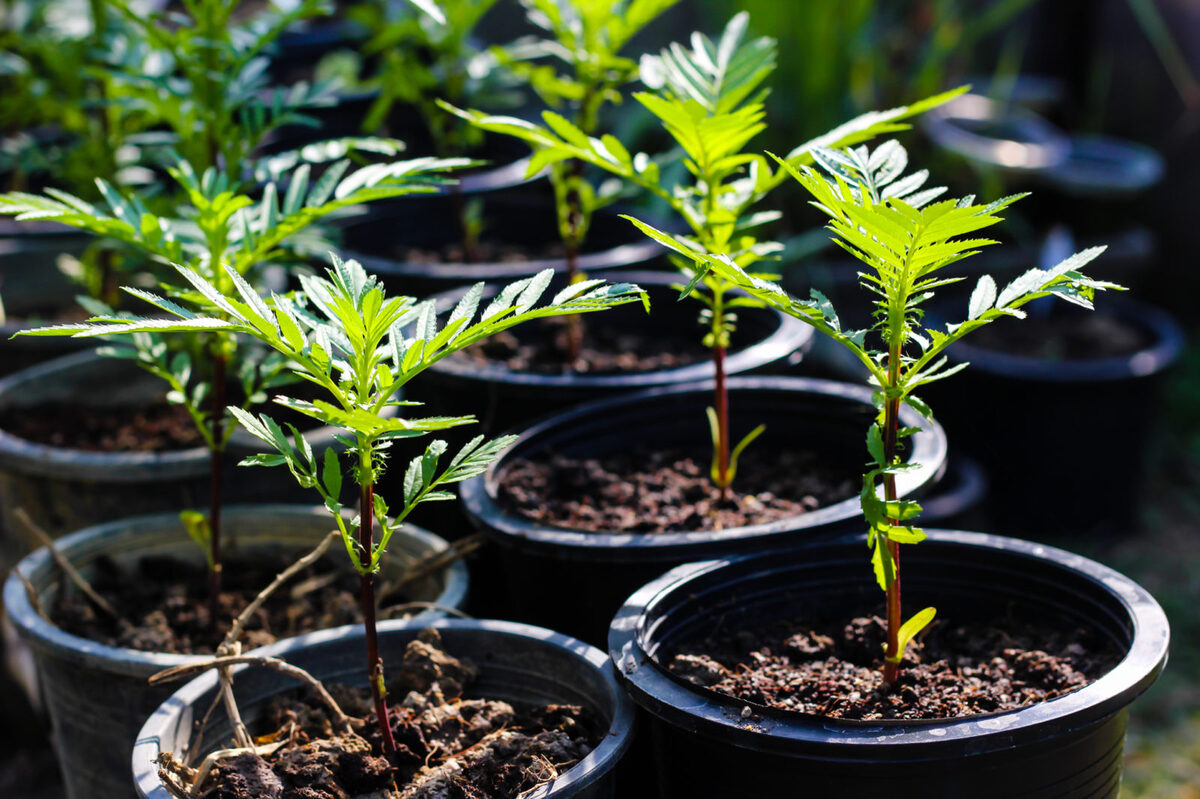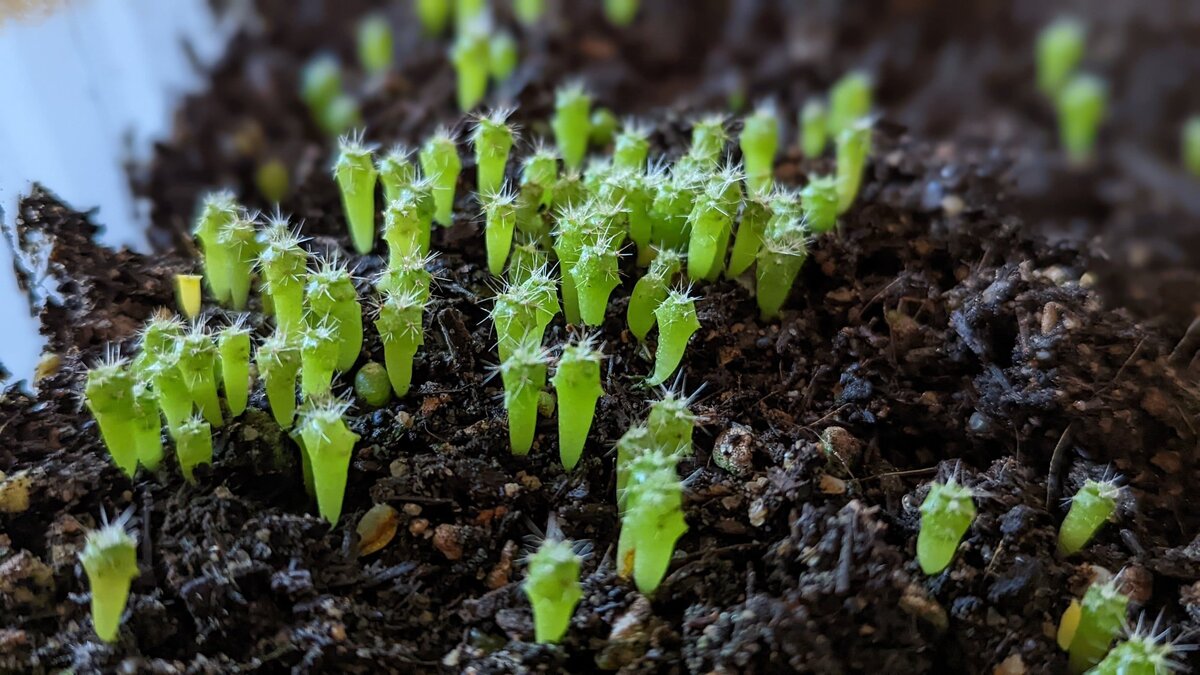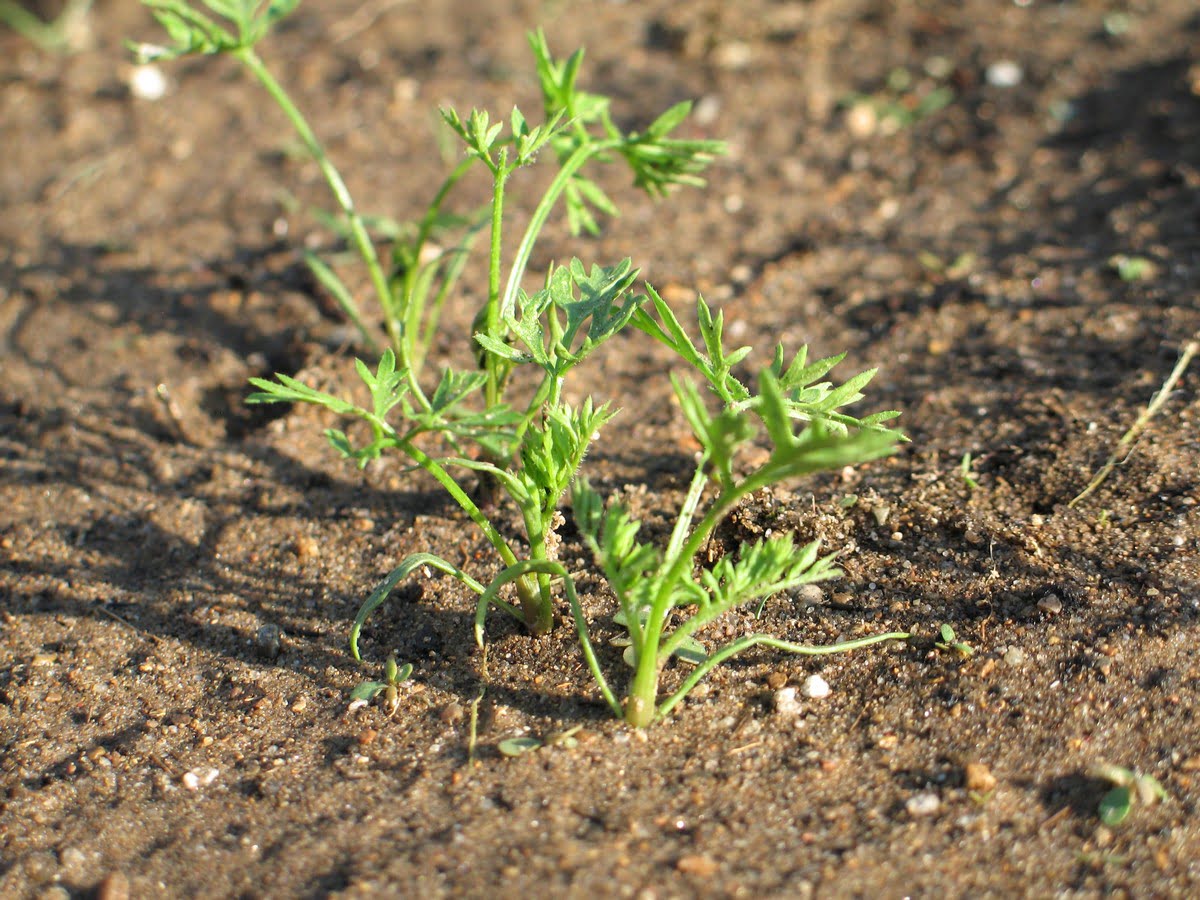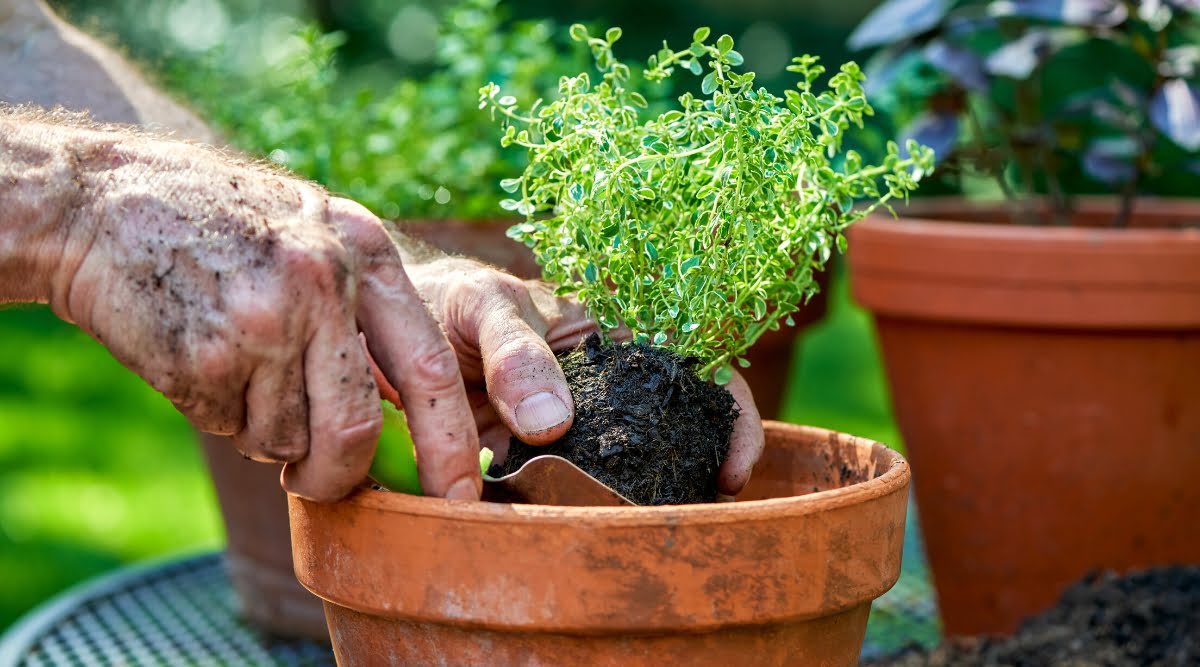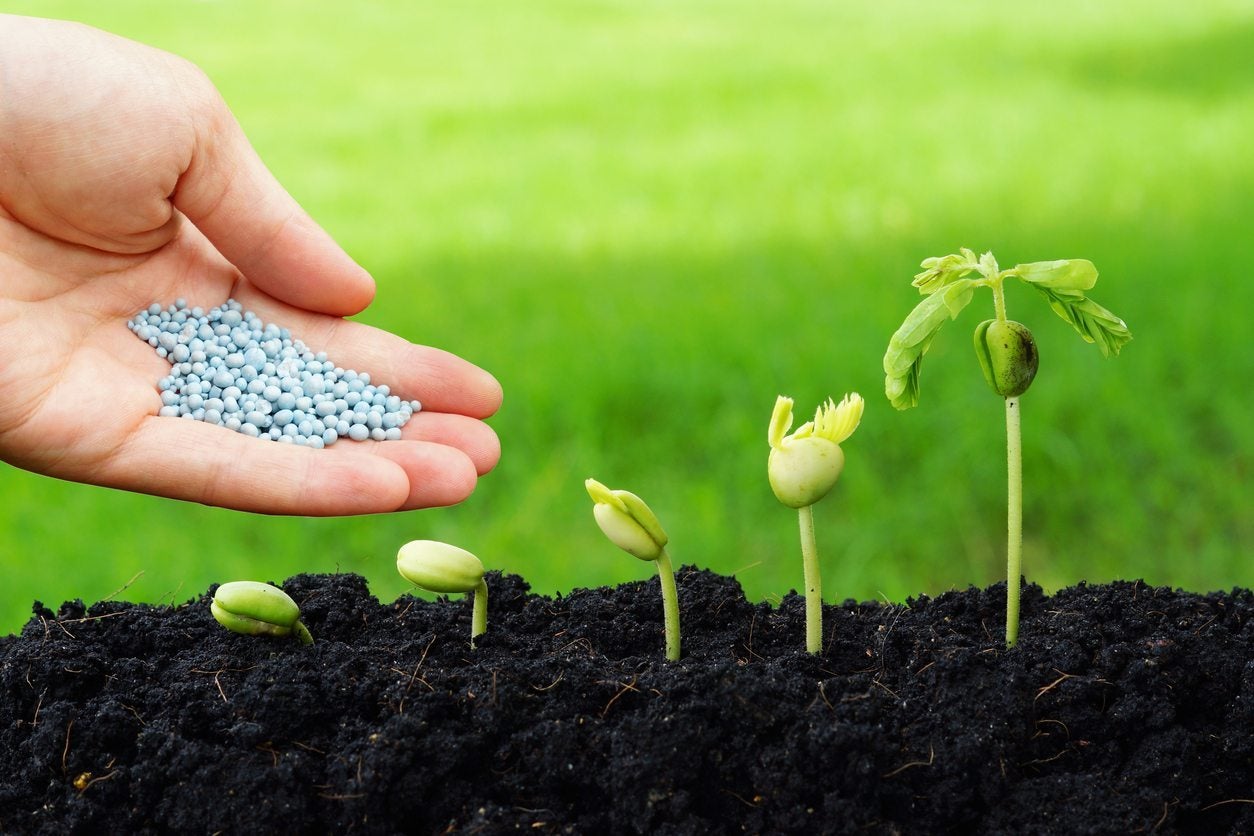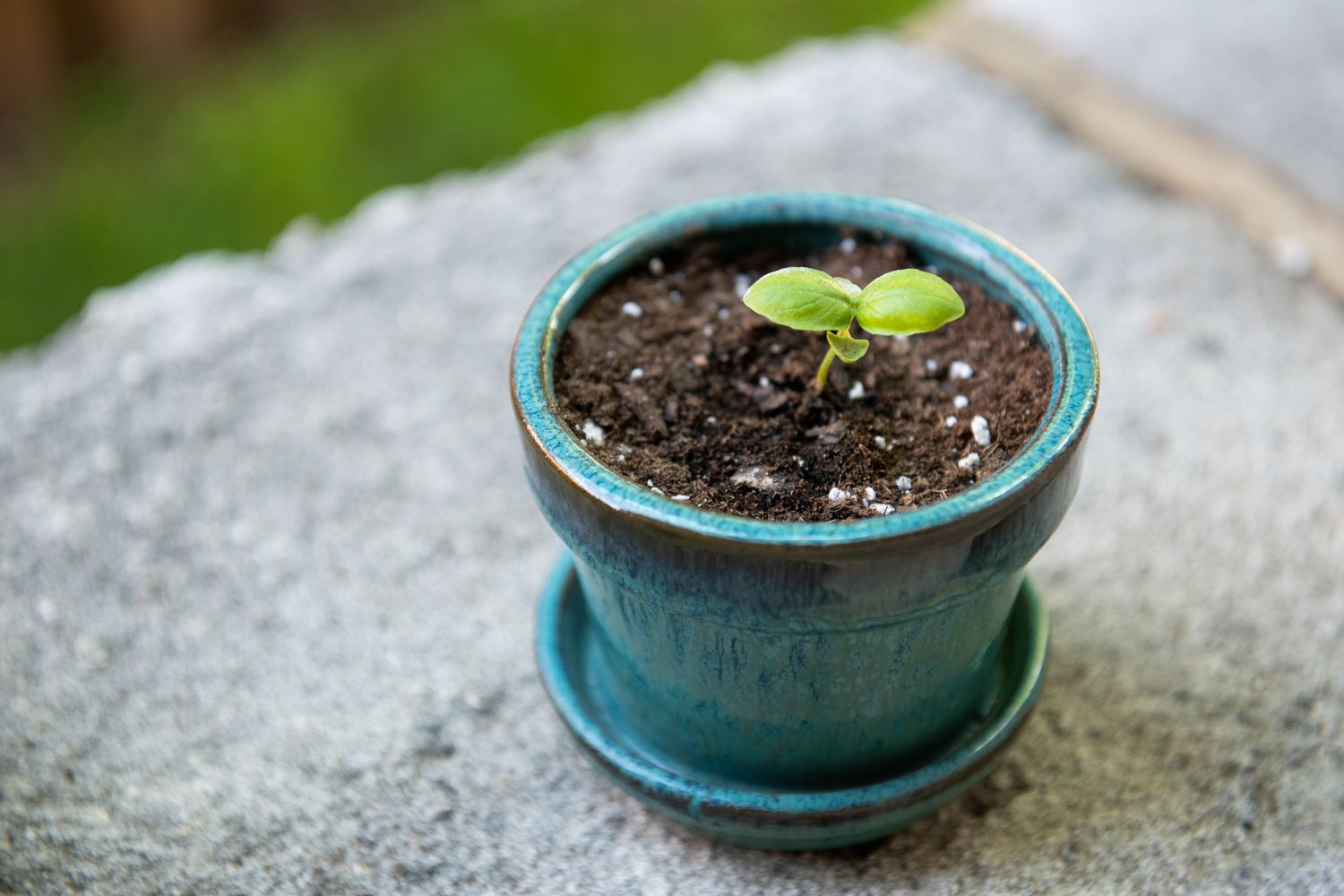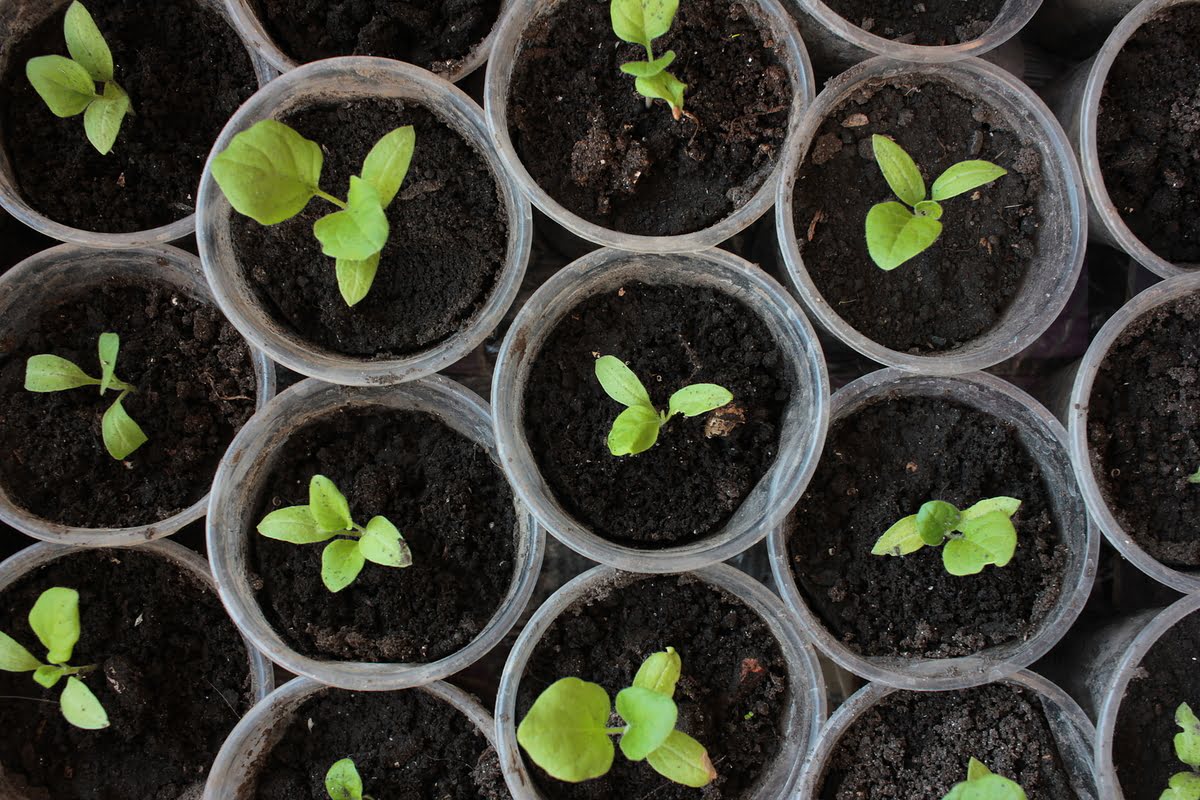Home>Types of Gardening>Edible Gardening>When To Thin Zucchini Seedlings
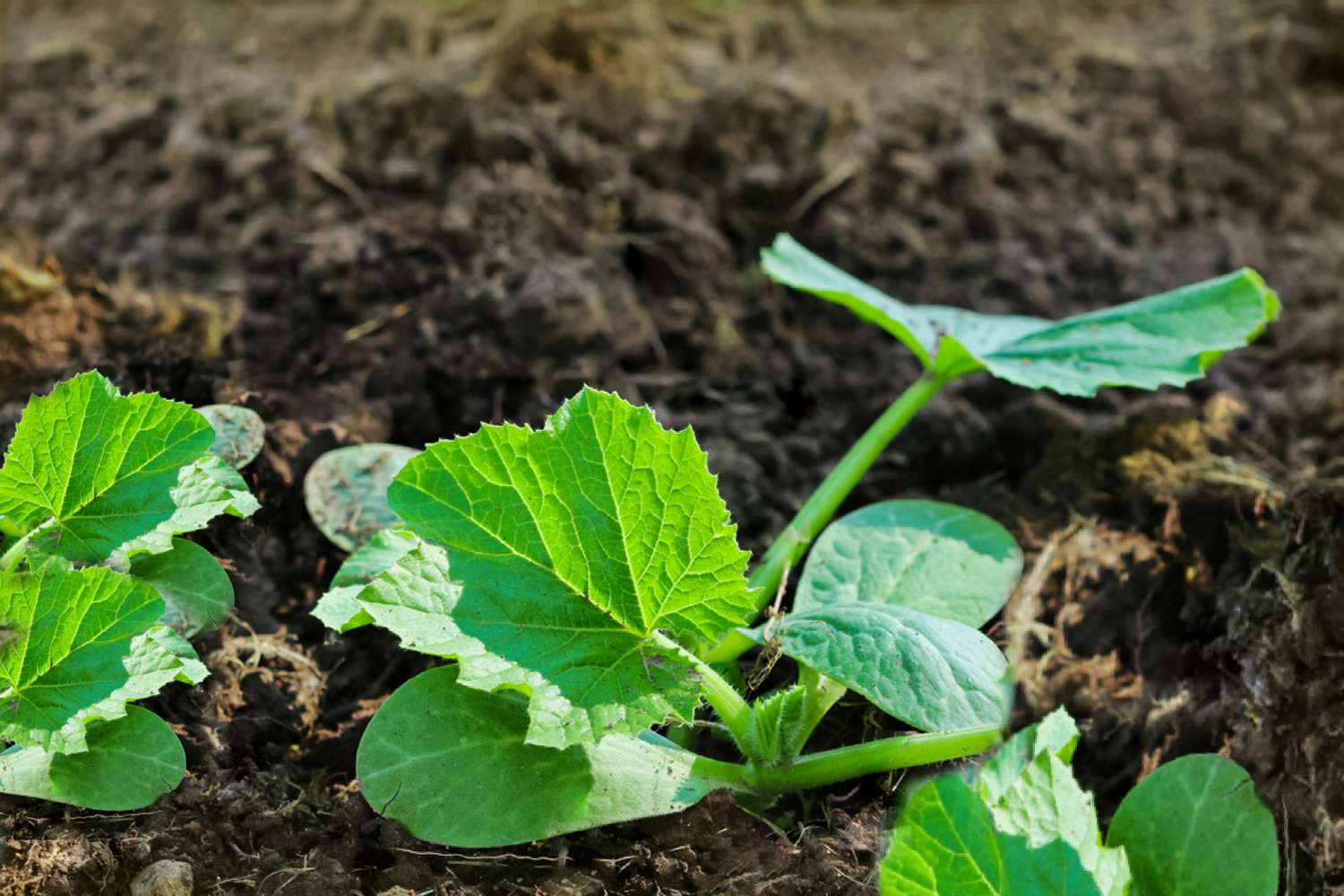

Edible Gardening
When To Thin Zucchini Seedlings
Published: January 5, 2024
Learn when to thin zucchini seedlings in your edible gardening journey. Ensure healthy growth and abundant zucchinis by following these simple guidelines.
(Many of the links in this article redirect to a specific reviewed product. Your purchase of these products through affiliate links helps to generate commission for Chicagolandgardening.com, at no extra cost. Learn more)
Table of Contents
Introduction
Welcome to the world of edible gardening! If you have a green thumb and a passion for growing your own food, then you’ve come to the right place. Edible gardening allows you to cultivate a variety of fruits, vegetables, and herbs right in your own backyard, providing you with fresh and nutritious produce all season long.
One popular vegetable that many gardeners love to grow is zucchini. Known for its delicious taste and versatility in the kitchen, zucchini can be used in a wide range of dishes, from stir-fries to breads to pastas. But to successfully grow zucchini, it’s important to understand the needs of these plants, including when to thin the seedlings.
Thinning zucchini seedlings is a crucial step in the growth process. It helps ensure that the remaining plants have enough room to develop strong roots and ample access to sunlight and nutrients. In this article, we will explore the signs that indicate it’s time for thinning, the best time to thin zucchini seedlings, and the proper technique for thinning. We will also provide some precautions and tips to help you achieve the best results.
So, if you’re ready to learn more about when and how to thin zucchini seedlings, grab your gardening gloves and let’s dive in!
Understanding Zucchini Seedlings
Before we delve into the process of thinning zucchini seedlings, it’s essential to have a good understanding of these young plants. Zucchini seedlings are the initial stage of zucchini plants, characterized by their small size and delicate leaves.
Zucchini seeds are typically sown directly in the garden or started indoors in seed trays. Once the seeds germinate, they develop into seedlings that begin to sprout above the soil surface. These seedlings consist of a main stem with two cotyledons, or seed leaves, at the top. As they grow, the true leaves, which have a distinct zucchini shape, emerge.
During the seedling stage, zucchini plants are highly vulnerable and delicate. They require proper care and attention to ensure healthy growth. It’s crucial to provide them with the appropriate conditions, such as adequate sunlight, water, and nutrients.
Seedlings rely on their root system to absorb water and nutrients from the soil. As they grow, the roots become stronger and more extensive, enabling the plants to support the development of their above-ground foliage, flowers, and ultimately, the fruit.
Understanding the growth process of zucchini seedlings is essential to grasp why thinning is necessary. As the seedlings continue to grow, they compete for resources, including space, sunlight, water, and nutrients. If they are too crowded, they can become weak and stunted, leading to poor overall development and yield. Thinning is a way to selectively remove some of the seedlings, allowing the remaining ones to thrive and reach their full potential.
Now that we have a solid understanding of zucchini seedlings, let’s explore the signs that indicate it’s time to thin them out.
Signs that Seedlings Need Thinning
As zucchini seedlings continue to grow, there are several signs that indicate it’s time to thin them out. These signs can help you determine when the seedlings have become overcrowded and need some breathing room.
One clear sign is when the seedlings start touching or overlapping each other. When the leaves of neighboring seedlings begin to touch, it’s a sign that they are competing for space and resources. The touching leaves create a barrier that blocks sunlight, preventing proper air circulation and increasing the risk of disease and pest infestation.
Another indication that seedlings need thinning is when they appear weak or leggy. Thin, elongated stems and pale, spindly leaves are signs that the seedlings are not receiving enough sunlight. This could be due to overcrowding, as neighboring seedlings shade each other. Thinning them out will create more space and allow each seedling to receive adequate sunlight, which is crucial for healthy growth.
Seedlings that are struggling to grow or have stopped growing altogether may also indicate the need for thinning. If some seedlings are significantly larger and healthier-looking than others, it’s likely that they are dominating the available resources. This can hinder the growth of the weaker seedlings, preventing them from reaching their full potential. Thinning will give the smaller seedlings a better chance to thrive and catch up.
In addition, keep an eye out for signs of nutrient deficiency. If some seedlings have yellowing leaves, stunted growth, or signs of wilting, it could indicate that the available nutrients are not sufficient to support all the seedlings. Thinning them out will ensure that the remaining plants have access to an adequate supply of nutrients.
By paying attention to these signs, you can determine when it’s time to thin your zucchini seedlings. That leads us to the next topic – the best time to perform the thinning process.
Best Time to Thin Zucchini Seedlings
Thinning zucchini seedlings at the right time is crucial for their overall health and development. While it’s important not to wait too long, thinning them out too early can also disrupt their growth. So, what is the best time to thin zucchini seedlings?
The ideal time to thin zucchini seedlings is when they have developed their first true leaves. These are the leaves that emerge after the initial cotyledons. The first true leaves are larger, more distinctive, and resemble the mature leaves of a zucchini plant. At this stage, the seedlings are robust enough to withstand the thinning process.
Thinning the seedlings too early, when they only have cotyledons, could result in damage to the delicate roots of the remaining seedlings. It’s important to wait until they have a stronger root system to ensure their survival.
In most cases, zucchini seedlings will reach the stage of having their first true leaves within two to three weeks after germination. This gives you a good timeframe to plan for thinning.
However, it’s worth noting that the specific timing may vary depending on the growing conditions, such as temperature, sunlight exposure, and soil fertility. Keep an eye on your seedlings and assess their growth progress to determine when they are ready to be thinned.
The weather also plays a role in the best time to thin zucchini seedlings. It’s recommended to perform thinning on a cool and cloudy day or during the evening when the sun is less intense. This reduces the stress on the young plants and minimizes the risk of transplant shock.
Now that you know when to thin the seedlings, let’s move on to the next section, where we’ll discuss the proper technique for thinning zucchini seedlings.
How to Thin Zucchini Seedlings
Thinning zucchini seedlings is a straightforward process that involves selectively removing some of the seedlings to create enough space for the remaining ones to thrive. Follow these steps to properly thin your zucchini seedlings:
- Prepare the area: Before you start thinning, water the soil around the seedlings to make it easier to remove them without disturbing the roots of the remaining plants.
- Identify the strongest seedlings: Take a close look at the seedlings and identify the healthiest, most vigorous ones. Look for seedlings with strong, stocky stems, healthy leaves, and vibrant color.
- Select the proper spacing: The ideal spacing for zucchini seedlings is around 2 to 3 feet apart. This provides enough room for the plants to spread out and receive adequate sunlight and airflow.
- Gently remove the excess seedlings: Use your fingers or a small garden tool to carefully lift the unwanted seedlings from the soil. Be gentle to avoid damaging the roots of the remaining seedlings.
- Thinning based on spacing: Start by removing the weakest or most crowded seedlings first. Gradually thin out the seedlings until they are spaced according to the recommended distance.
- Dispose of the excess seedlings: Once you have removed the excess seedlings, gently dispose of them, making sure not to damage the roots of the remaining plants.
- Water and mulch: After thinning, water the remaining seedlings to help them recover and settle into their new spacing. Apply a layer of organic mulch around the base of the plants to conserve moisture and suppress weed growth.
Remember that while thinning is important, it’s equally essential to handle the seedlings with care. Avoid unnecessary disturbance to the roots, as this can stress the remaining plants. Thinning should be performed delicately and with precision to ensure the best results.
Up next, we’ll explore the proper spacing for thinned zucchini seedlings, which is crucial for their healthy growth and development.
Proper Spacing for Thinned Seedlings
After thinning your zucchini seedlings, it’s important to ensure they are properly spaced to allow for optimal growth and development. The right spacing not only provides each plant with enough room to spread out but also promotes better airflow and reduces the risk of disease.
The recommended spacing for thinned zucchini seedlings is typically around 2 to 3 feet apart. This allows the plants to grow without overcrowding each other and ensures they have access to ample sunlight, water, and nutrients.
Spacing the seedlings apart gives them enough space to develop a robust root system, which is vital for their overall health and ability to absorb water and nutrients from the soil. It also helps reduce competition for resources, allowing each plant to thrive.
When spacing the seedlings, consider the mature size of the zucchini plants. They can grow quite large, with sprawling vines that can reach several feet in length. Therefore, providing adequate spacing ensures that the plants have enough room to spread their foliage and produce a bountiful harvest.
Another aspect to consider when spacing zucchini seedlings is the type of zucchini variety you are growing. Some varieties are more compact and bushy, requiring less space between plants. Others have longer vines and need more room to spread out.
It’s also important to consider the overall layout and design of your garden. Leave enough space between rows of zucchini plants to allow easy access for harvesting, watering, and general maintenance.
When planting zucchini seedlings, it’s a good idea to use a measuring tool or spacing template to ensure consistent and accurate spacing between plants. This helps maintain a neat and organized garden, as well as promotes efficient plant growth.
By following proper spacing guidelines, you’ll create an environment that promotes healthy growth, reduces the risk of disease, and allows your zucchini plants to reach their full potential.
Now that we have discussed the importance of proper spacing, let’s move on to the last section, where we will share some precautions and tips for thinning zucchini seedlings.
Precautions and Tips for Thinning Zucchini Seedlings
Thinning zucchini seedlings is a critical step in promoting healthy growth, but it’s essential to take some precautions and keep a few tips in mind to ensure success. Here are some precautions and tips to consider:
1. Handle seedlings with care: When thinning, be gentle when removing excess seedlings to avoid damaging the roots of the remaining plants. Delicate handling minimizes stress and improves the chances of survival.
2. Time thinning properly: Wait until the seedlings have developed their first true leaves before thinning. Thinning too early can cause damage to the delicate roots, while waiting too long can lead to overcrowding and competition for resources.
3. Water before thinning: Water the soil around the seedlings before thinning. Moist soil makes it easier to remove the excess seedlings without disturbing the roots of the remaining plants.
4. Dispose of excess seedlings properly: Once you have removed the excess seedlings, dispose of them carefully to prevent any potential diseases or pests from spreading to the remaining plants. Do not compost any diseased or pest-infested seedlings.
5. Thin gradually: Avoid removing all the excess seedlings at once. Gradually thin them out over a few sessions to reduce the shock to the remaining plants. This allows the remaining seedlings to adjust to the new spacing and promotes better recovery.
6. Maintain adequate spacing: Ensure that the remaining seedlings have enough space to thrive. Follow the recommended spacing guidelines and adjust accordingly based on the specific zucchini variety you are growing.
7. Provide proper care: After thinning, continue to provide the remaining seedlings with adequate sunlight, water, and nutrients. Regularly monitor their growth and address any issues promptly, such as nutrient deficiencies or pest infestations.
8. Mulch around the plants: Applying a layer of organic mulch around the base of the zucchini plants helps conserve moisture, regulate soil temperature, and suppress weed growth. Mulching also adds nutrients to the soil as it breaks down.
By following these precautions and tips, you increase the likelihood of success when thinning zucchini seedlings. Your efforts will result in stronger, healthier plants that are better equipped to produce a bountiful harvest.
Now that you are equipped with the knowledge and techniques to thin zucchini seedlings, it’s time to put it into practice and watch your garden thrive with delicious zucchinis!
Conclusion
Congratulations! You are now equipped with the knowledge and techniques to successfully thin zucchini seedlings in your edible garden. By understanding the signs that indicate the need for thinning, knowing the best time to thin, and following the proper technique and spacing guidelines, you are well on your way to cultivating healthy and productive zucchini plants.
Thinning zucchini seedlings allows the remaining plants to have the space, sunlight, water, and nutrients they need to thrive. It reduces competition for resources and promotes better airflow, ultimately leading to stronger and more productive plants.
Remember to handle the seedlings with care during the thinning process and provide adequate care for the remaining plants. Keep an eye on their growth and address any issues promptly to ensure their health and vitality.
Your efforts in thinning zucchini seedlings will pay off as you witness the development of robust plants, bountiful harvests, and the satisfaction of growing your own fresh zucchinis. Experiment with different varieties, recipes, and growing techniques to continue expanding your edible gardening knowledge.
So, grab your gardening gloves, head to your garden, and start thinning those zucchini seedlings. Enjoy the process of nurturing and watching your plants flourish, and savor the fruits of your labor with delicious homegrown zucchinis in your meals. Happy gardening!

